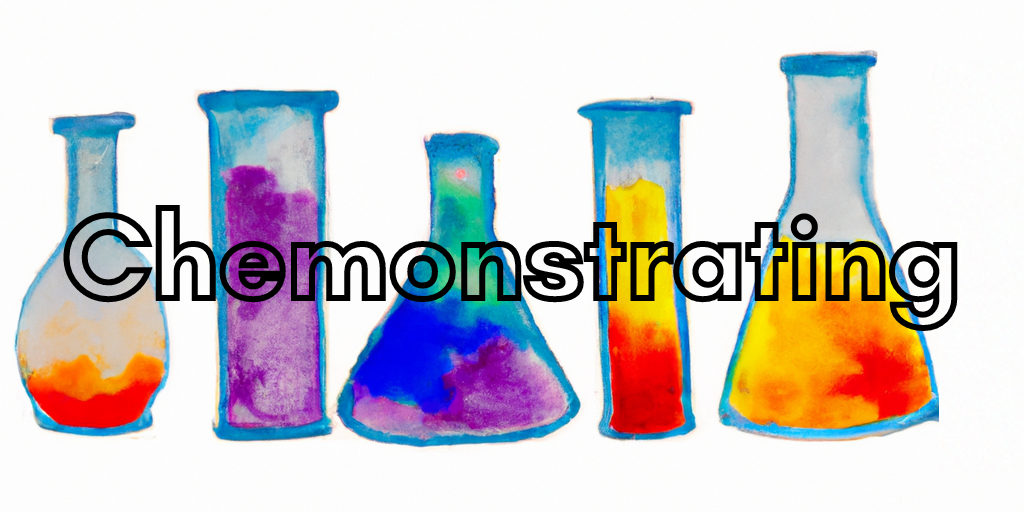Acid-Base Properties of Salts
Alternate titles:
Acid and Base Properties of Salts, Acidity of Salts
Purpose:
To show the properties of acids and bases through the use of different colors.
Materials:
Reagents:
- 0.1 M Ammonium acetate (NH4C2H3O2)
- 0.1 M Ammonium chloride (NH4Cl)
- 0.1 M Potassium iodide (KI)
- 0.1 M Sodium bicarbonate (NaHCO3)
- Universal indicator
Hazards and PPE:
- Wear approved safety goggles and gloves.
Protocol:
Preparation
- Set out the demo glasses in a line.
- Pour 60 mL of the first solution on the first demo glass, 60 mL of the second solution into the second demo glass, and so on.
Demonstration
- Write the following chart on the board:
-
| Color | pH |
|---|
| Red | 2 |
| Red-Orange | 3 |
| Orange | 4 |
| Orange-Yellow | 5 |
| Yellow | 6 |
| Green | 7 |
| Green-Blue | 8 |
| Green-Violet | 9 |
| Violet | 10 |
- Add one drop of Universal indicator into each of the beakers.
Additional Notes:
- The solutions should be colored as follows:
- KI – Green (pH = 7)
- NH4Cl – Orange (pH = 4.6)
- NaHSO3 – Red-Orange (pH = 4.5)
- NH4C2H3O2 – Green (pH = 7)
- NaC2H3O2 – Blue-Green (pH = 8.9)
- Universal indicator contains primarily thymol blue, methyl red, bromothymol blue, and phenolphthalein.
- Before adding the Universal indicator, you can have the students predict the color that each solution will change.
Disposal:
- Solutions should be put in a properly labeled waste container.
- Waste can be diluted and emptied down the drain depending on your institutions's waste protocols.
Reactions:
- Where HIn and In- represent the protonated and unprotonated forms of the various indicators present in universal indicator:
- HIn(aq) + AB(aq) ⇌ HB(aq) + KIn(aq)
Citations:
- This demo adapted from the demo library of the Chemistry department at the University of Illinois at Urbana-Champaign.
